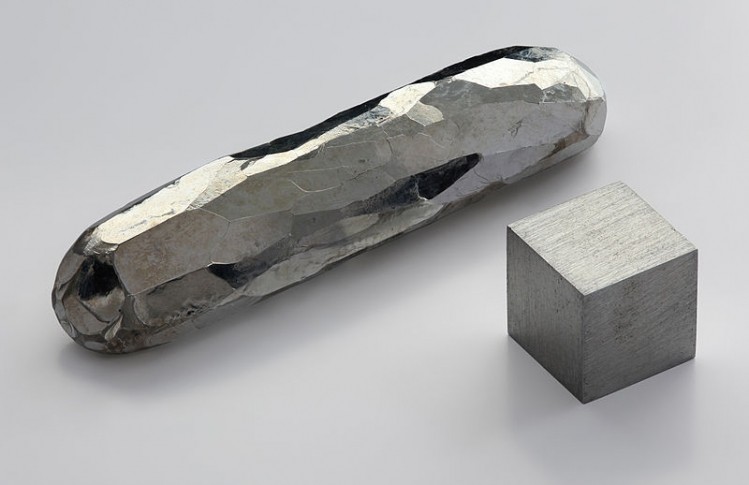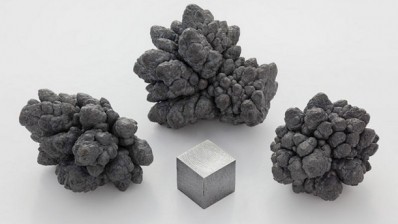Kids exposed to cadmium in dark chocolate - but they'd have to eat a lot to exceed health limits

In some cases it would take just three regular-sized dark chocolate bars a month to exceed the limit, putting kids at risk of a series of health defects. Milk chocolate contains lower levels, but could leave children highly exposed if eaten in excess.
30 samples tested in Brazil
The study published in the Journal of Agricultural and Food Chemistry by Javier Villa et al. at the University of Campinas measured lead and cadmium concentrations in 30 commercially available chocolates in Brazil using graphite furnace atomic absorption spectrometry.
They found that none of the 30 samples tested exceeded max levels recommended by Brazilian legislation and the EU and the World Health Organization (WHO). The concentrations of cadmium and lead found ranged between 1.7−107.6 and 21−138.4 ng/g, respectively. The World Health Organization (WHO) has set a monthly intake limit of 25 microgram per kg of body weight - this equates to 375,000 ng per month for a child of average weight (15 kg).
The researchers said that if a child ate 10 g a day of a dark chocolate with the highest cadmium concentration found in its study, it would contribute to 8.6% of their recommended monthly intake.
“Thus, the dark chocolate consumption might be a significant source of Cd, especially for children,” they said.
However, some number crunching shows that children would have to eat 77 regular-sized bars (45 g) of the high cadmium chocolate identified in the study. It must also be remembered that this was the highest cadmium concentration found out of 30 samples. The average dark chocolate cadmium concentration was 47.85 ng/g. This means a child would have to eat 174 regular sized dark chocolate bars to exceed the WHO monthly guidance. For milk chocolate that figure would be 789 bars.
“Yours calculations are right. However, in our study, the calculations were done considering the highest levels found and not an average concentration. This is a recommended procedure to ensure you are considering the worst scene,” Prof. Solange Cadore, one of the researchers, told this site.
“If you consider the highest levels found and the consumption of 10 g of chocolate per day for a child weighing 15 kg, this would represent a maximum contribution of 20% of the TWI recommended by the European Union, which could be relevant considering that chocolate is probably not the only source of Cd in the diet.”
Also two of the dark chocolate samples surpassed the Food and Drug Administration’s (FDA) 100 ng/g for lead in candies, the study found.
Source of cadmium
EU Rules
In May, the European Commission established limits for cadmium in chocolate and cocoa products over concerns children would be exposed to the heavy metal. The rules set to take effect from January 1 2019, say that that milk chocolate with fewer than 30% cocoa solids should not exceed 0.1 mg/kg wet weight. Chocolate with between 30-50% of cocoa solids should not surpass 0.3 mg/kg wet weight, while the dark chocolate limit will be 0.8. Cocoa powder sold for drinking chocolate will also have a 0.6 cap.
Cadmium and lead are naturally present in the environment and can be inhaled as well as foods like shellfish, liver, kidney, cereals and infant formula, but the researchers said that cocoa was the biggest contributor to raised heavy metal traces.
The researchers measured five samples of the same brand that had different cocoa content – ranging from 34% to 84%.
“According to the results, a linear correlation exists between the cocoa content and the concentrations of Cd and Pb which suggests that the main source of contamination of Cd and Pb in chocolates is the cocoa used in the manufacturing process.”
Earlier research by Rankin et al. and Yanus et al. said that cadmium and lead traces were higher in cocoa butter and powder than in the cocoa bean core, suggesting the manufacturing process had a major impact.
“Controlling the cadmium and lead contents in chocolate products is a public health concern, especially because children are more susceptible to lead and cadmium poisoning through the consumption of chocolate products,” said the current study.
Absorption and health risks
But the researchers noted that only a fraction of ingested cadmium or lead from chocolate would reach the bloodstream.
The study by Yanus said that more heavy metals entered a child's bloodstreams than an adult's due to lower body weight and higher digestive tract uptake.
Lead poisoning is linked to a host of health ailments such as abdominal pain in adults. Studies have suggested lead exposure can delay kids’ intellectual development.
Cadmium, found in soil grown crops, is also toxic at trace levels. It can damage several human organs and can lead to numerous other health defects.
Dark chocolate has also been linked to a host of positive health effects such as protection from neuro-degenerative diseases and maintenance of cardiovascular health.
Source:
J. Agric. Food Chem., 2014, 62 (34), pp 8759–8763
DOI: 10.1021/jf5026604
'Cadmium and Lead in Chocolates Commercialized in Brazil'
Authors: Javier E. L. Villa , Rafaella R. A. Peixoto and Solange Cadore















